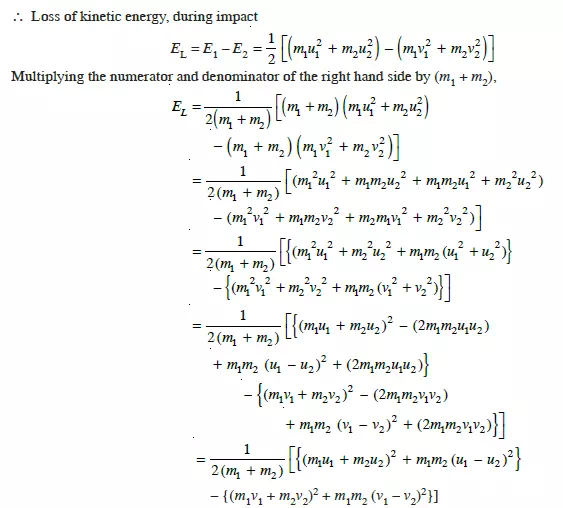Collision of Elastic Bodies
INTRODUCTION
We daily see children playing with balls of glass, rubber and other elastic materials. If we see them carefully, we will find that if a glass ball is allowed to fall on a marble floor, from a certain height, it rebounds (i.e. rises up, after striking the floor) to a certain height. This height is, generally, less than the height from which the ball is allowed to fall. If the same ball is allowed to fall on a wooden floor, then it will rebound to a lesser height. We will also see that if the balls of different materials are allowed to fall on a marble floor, they will rebound to different
heights. This property of bodies, by virtue of which, they rebound, after impact, is called elasticity. It may be noted that a body, which rebounds to a greater height is said to be more elastic, than that which rebounds to a lesser height. But, if a body does not rebound at all, after its impact, it is called an inelastic body.
PHENOMENON OF COLLISION
Whenever two elastic bodies collide with each other, the phenomenon of collision takes place as given below :
1. The bodies, immediately after collision, come momentarily to rest.
2. The two bodies tend to compress each other, so long as they are compressed to the maximum value.
3. The two bodies attempt to regain its original shape due to their elasticity. This process of regaining the original shape is called restitution. The time taken by the two bodies in compression, after the instant of collision, is called the time of compression and time for which restitution takes place is called the time of restitution. The sum of the two times of collision and restitution is called time of collision, period of collision, or period of impact.
LAW OF CONSERVATION OF MOMENTUM
It* states, “The total momentum of two bodies remains constant after their collision or any other mutual action.” Mathematically

NEWTON’S LAW OF COLLISION OF ELASTIC BODIES
It states, “When two moving bodies collide with each other, their velocity of separation bears a constant ratio to their velocity of approach.” Mathematically,

COEFFICIENT OF RESTITUTION


TYPES OF COLLISIONS
When two bodies collide with one another, they are said to have an impact. Following are the two types of impacts.
1. Direct impact, and
2. Indirect (or oblique) impact.
DIRECT COLLISION OF TWO BODIES

The line of impact, of the two colliding bodies, is the lien joining the centres of these bodies and passes through the point of contact or point of collision as shown in Fig. 27.2. If the two bodies, before impact, are moving along the line of impact, the collision is called as direct impact as shown in Fig. 27.2.



LOSS OF KINETIC ENERGY DURING COLLISION
The kinetic energy may be broadly defined as the energy possessed by a body by virtue of its mass and velocity. Mathematically kinetic energy,




